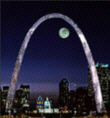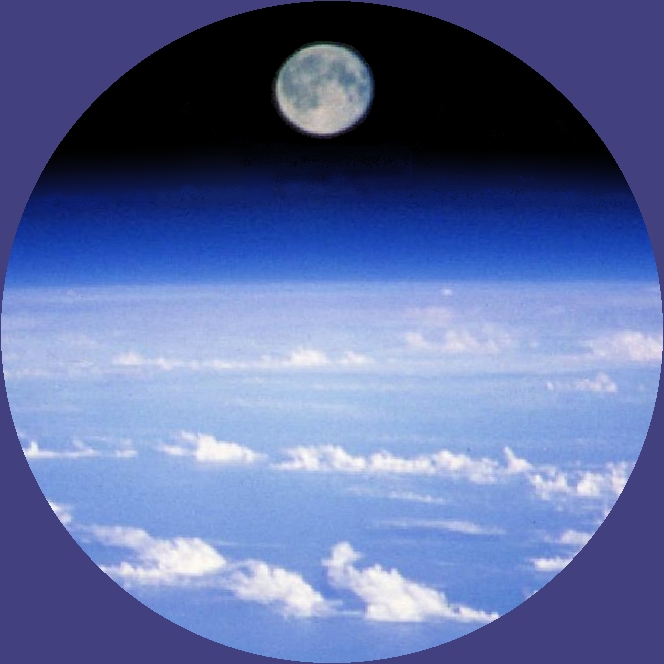

| Home |
| Activities |
| Member Bios |
| Moon Data |
| Meetings |
| Links |
| About Us |
| Youth |
| Open Letter |
| Contacts |
| Calendar |
| spare |

"LEO is halfway to anywhere in the solar system." |
|
Robert H. Heinlien |
|
| the deltaV to get to LEO |
~ 8.29 KPS then |
| delta V to solar orbit |
~ 3.24 KPS |
|
if the moon happens to be in the way, you need to expend energy for a gentle touchdown |
|
| delta V from LEO to the surface of the Moon |
~ 6 KPS |
| delta V from the surface of the Moon and to go downhill to Earth |
~ 2.38 KPS |
| delta V from the surface of the Moon and to maneuver into LEO |
~ 3.10 KPS |
|
delta V from LEO to escape solar system |
~ 9.09 KPS |

LUNAR UNDERGROUND WEB RING | Home | Previous | Random | Next | End | |
We have another moonrise JPG, a last quarter moon taken with
a telephoto lens during Columbia's last mission,
in postcard (5 X 7.8 inches - 356 X 563 @ 72 DPI, 59.5K)
and poster versions (20.7 X 32.26 inches - 1987 X 3097 @ 96 DPI, 1.2 Meg).
A good overview of the moon is available at the SEDS Nine Planets website.
NASA News Release: 05-190
Steve Roy, Marshall Space Flight Center, Huntsville, Ala.
NASA Astronomers Spot Rare Lunar Meteor Strike
and
NASA Science News: An Explosion on the Moon
and
artist's rendering, various resolutions, including a video
At the time of the strike, the moon was passing through the Taurid meteor shower, which results from a meteorid stream whose parent is Comet 2P/Encke. At the time of the impact, with the moon moving around the earth and the earth and meteroid moving around the sun in signifantly different orbits, the net velocity was 27 KPS (60,000 MPH). Assuming that collision velocity and based on the intensity and duration of the flash, the meteoroid's diameter is estimated to have been about 12 centimeters (five inches) with the blast equal in energy to about 70 kg (154 pounds) of TNT, and may have gouged a crater about 3 meters (about 10 feet) in diameter out of the moon's surface.
It's the old 1/2 mv2 problem with vTOTAL being
an astronomical 27 KPS (60,000 MPH).
So, with the kinetic energy of the meteoroid approximating an irresistible force and the surface of the moon representing an immovable object, they just naturally turn into a very hot, compact plasma which then becomes an expanding cloud of hot gases that eventually spreads out enough that it no longer vaporizes everything in its way - but still has enough energy to turn whatever is trying to slow it down into debris and throw that a considerable distance.
A prior event was referenced in these announcements, a joint observation orchestrated by David Dunham, president of the International Occultation Timing Association (IOTA). He predicted that during the November 18, 1999 Leonid meteor shower, the face of the moon not lit by sunshine might have meteorite strikes energetic enough to be visible. A total of six flashes in the Moon's dark area were detected and confirmed in video recordings made with modest equipment along with visual telescopic observations.
Note: VLEO=~7.8KPS but some kinetic energy has to be converted to the potential energy of LEO altitude and some energy will be lost to atmospheric friction getting there.